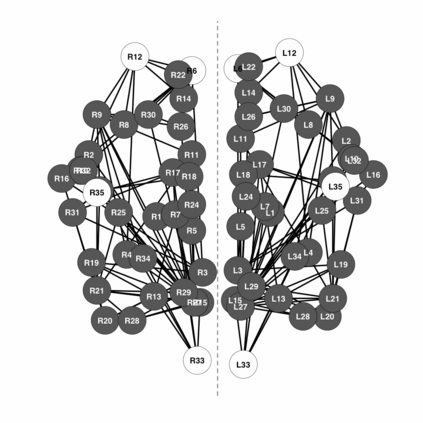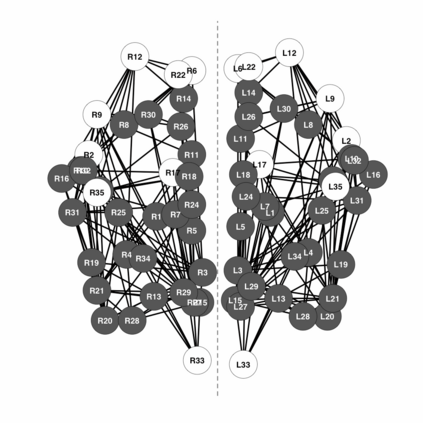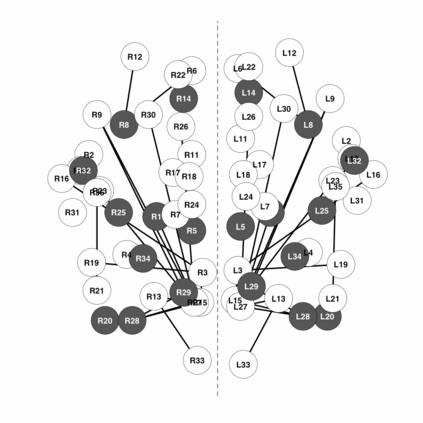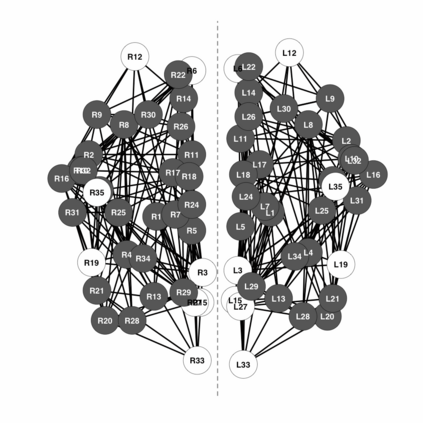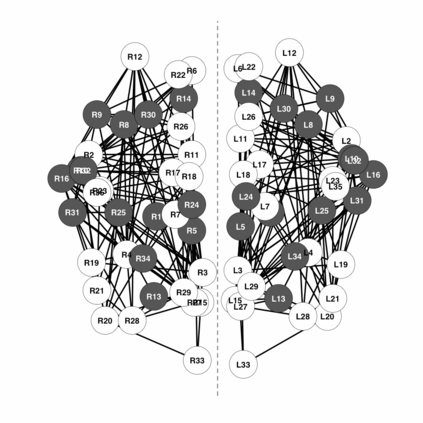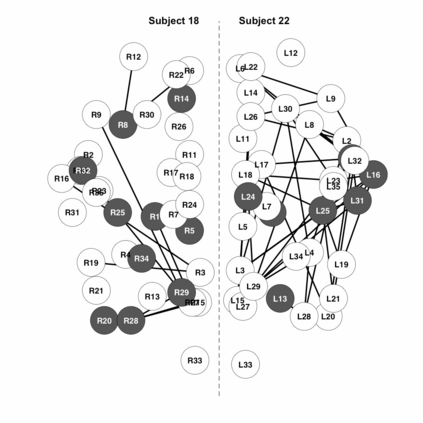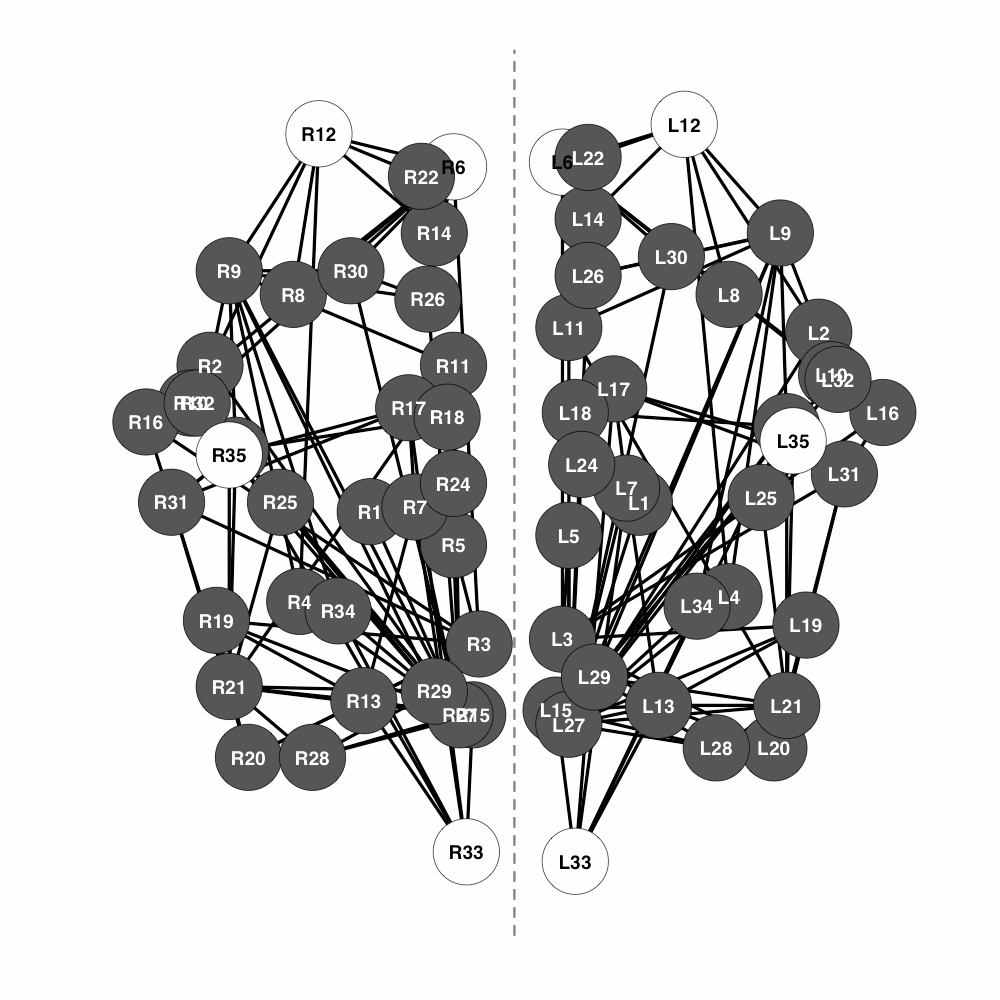Neuroimaging is the growing area of neuroscience devoted to produce data with the goal of capturing processes and dynamics of the human brain. We consider the problem of inferring the brain connectivity network from time dependent functional magnetic resonance imaging (fMRI) scans. To this aim we propose the symmetric graphical lasso, a penalized likelihood method with a fused type penalty function that takes into explicit account the natural symmetrical structure of the brain. Symmetric graphical lasso allows one to learn simultaneously both the network structure and a set of symmetries across the two hemispheres. We implement an alternating directions method of multipliers algorithm to solve the corresponding convex optimization problem. Furthermore, we apply our methods to estimate the brain networks of two subjects, one healthy and the other affected by a mental disorder, and to compare them with respect to their symmetric structure. The method applies once the temporal dependence characterising fMRI data has been accounted for and we compare the impact on the analysis of different detrending techniques on the estimated brain networks.
翻译:神经成像是神经科学中用于生成数据以捕捉人类大脑过程和动态的日益增长的领域。 我们考虑从时间依赖功能磁共振成像(fMRI)扫描中推断大脑连接网络的问题。 为此,我们提出对称图形阵列,这是一个受惩罚的可能性方法,其引信型惩罚功能明确考虑到大脑的自然对称结构。对称图形阵列允许人们同时学习网络结构以及两个半球的对称。我们采用乘数算法的交替方向方法来解决相应的convex优化问题。此外,我们运用方法来估计两个主体的脑网络,一个是健康对象,另一个是受精神紊乱影响对象,并将两者与它们的对称结构进行比较。一旦计算出FMRI数据的时间依赖性,该方法就适用。我们比较了对不同分解技术分析对估计的脑网络的影响。

